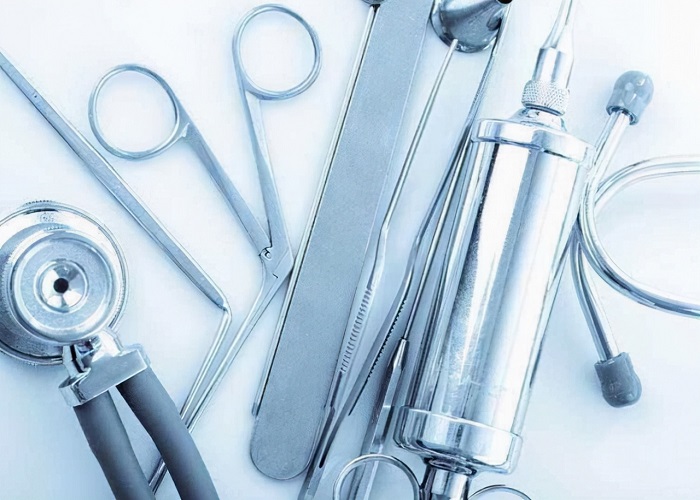Medical devices play a crucial role in healthcare systems across the globe, and understanding which ones are most used in each country provides valuable insights. These devices range from simple diagnostic tools to complex treatment – related equipment.
Wilhelm Conrad Roentgen is often credited with a significant early step in the use of a medical device for diagnosis, which led to its use in treatment – related contexts. In 1895, he discovered X – rays. His discovery was quickly recognized for its potential in medicine. The first research papers on the use of X – rays in medicine started to emerge soon after.
Initially, X – rays were used mainly for visualizing bones and locating foreign objects in the body. These early papers described how X – ray images could help surgeons plan procedures more accurately. As time passed, the understanding of X – ray radiation’s effects on tissues led to the development of radiation therapy for treating diseases like cancer. Early 20th – century researchers built on Roentgen’s discovery to explore the therapeutic applications of X – rays in oncology.
Willem Einthoven is a key figure in the history of medical devices for diagnosis and treatment – related decision – making. In 1901, he invented the first practical electrocardiogram (ECG). His research papers on the ECG were crucial in establishing its use in understanding heart conditions.
The ECG allowed physicians to detect abnormal heart rhythms and other cardiac disorders. This device revolutionized cardiology and led to more informed treatment of heart diseases. Early research papers by Einthoven and his contemporaries described how the ECG patterns could be used to diagnose conditions such as arrhythmias and myocardial infarctions. This, in turn, guided the development of appropriate medical and surgical treatments for heart disease.
After the discovery of insulin in 1921 by Frederick Banting and Charles Best, the development of the insulin syringe became crucial for diabetes treatment. Research papers soon followed, detailing the proper use of the syringe to administer insulin to diabetic patients.
In many developed countries, the stethoscope remains one of the most frequently used medical devices. This classic instrument has been an essential part of the medical toolkit for centuries. Physicians, nurses, and other healthcare providers use it to listen to the heart, lungs, and other internal body sounds. Its simplicity, portability, and effectiveness in providing immediate information make it indispensable in primary care settings, hospitals, and even in home healthcare visits.
Another widely used device is the blood pressure monitor. With the increasing prevalence of hypertension worldwide, the need to regularly measure blood pressure has made this device ubiquitous. In countries with well – established healthcare systems, both traditional mercury sphygmomanometers and modern digital blood pressure monitors are commonly found in clinics and hospitals. Additionally, home – use blood pressure monitors have become popular, allowing patients to monitor their own blood pressure and share the data with their healthcare providers.
In the field of diagnostic imaging, ultrasound machines are highly prevalent. They are used in various medical specialties, including obstetrics, cardiology, and abdominal medicine. The ability of ultrasound to provide real – time images without the use of ionizing radiation makes it a safe and valuable tool. In countries with advanced healthcare, ultrasound devices are found in hospitals, clinics, and even mobile medical units that provide services in remote areas.
Syringes and needles are also among the most used medical devices globally. They are essential for administering medications, vaccines, and drawing blood samples. From large – scale vaccination campaigns to daily hospital procedures, the demand for these simple yet crucial devices is consistently high. In countries with different healthcare infrastructure levels, ensuring the availability and proper disposal of syringes and needles is a key aspect of healthcare management.
In developing countries, the situation may vary slightly. Basic diagnostic kits, such as those for detecting malaria, tuberculosis, and other common infectious diseases, are widely used. These kits often include rapid – test devices that can provide quick results, enabling healthcare workers to start treatment promptly. Additionally, simple wound – care supplies like bandages and dressings are commonly employed, given the high incidence of injuries and the need for basic first – aid.
In conclusion, the most used medical devices in each country reflect the specific healthcare needs and the level of technological infrastructure. Whether it’s a simple stethoscope or a more advanced imaging machine, these devices are integral to providing quality healthcare services and improving patient outcomes. Understanding these usage patterns can help in planning healthcare resources, training healthcare providers, and further developing medical technology to better meet the needs of patients around the world.
Read more
- Exploring The Hidden Dangers Of Pregnancy: What Every Expectant Mother Should Know
- The National Concern Over Fertility: Implications For Public Health
- The Secret Ingredient For Weight Loss? Mindful Chewing Revealed!


